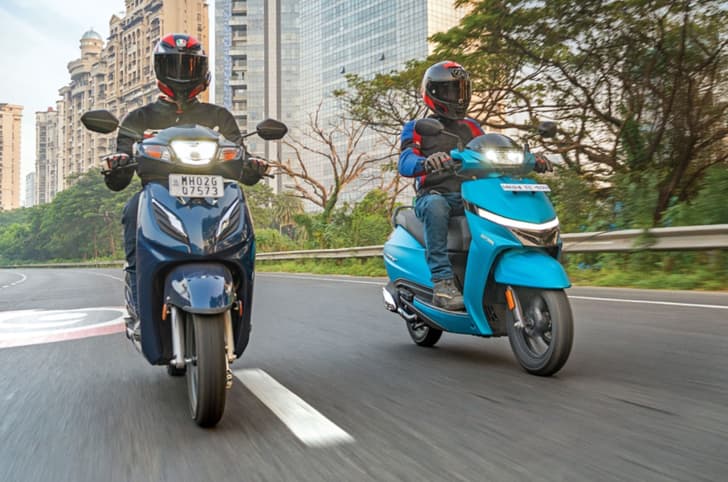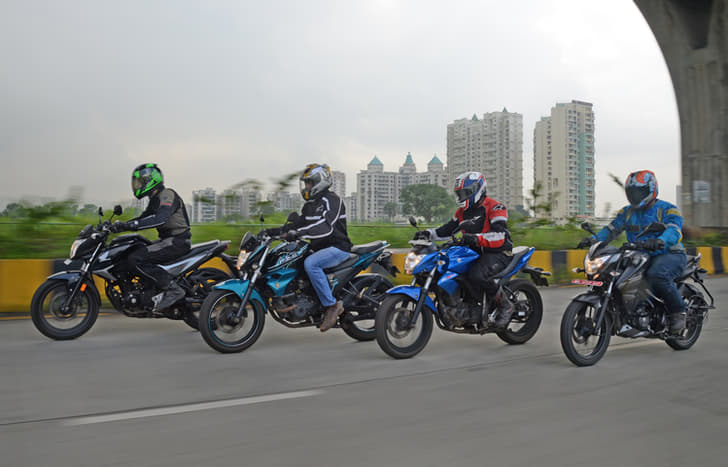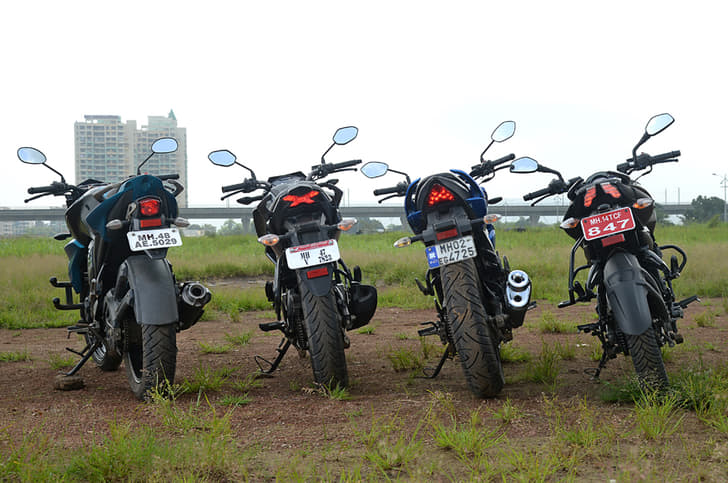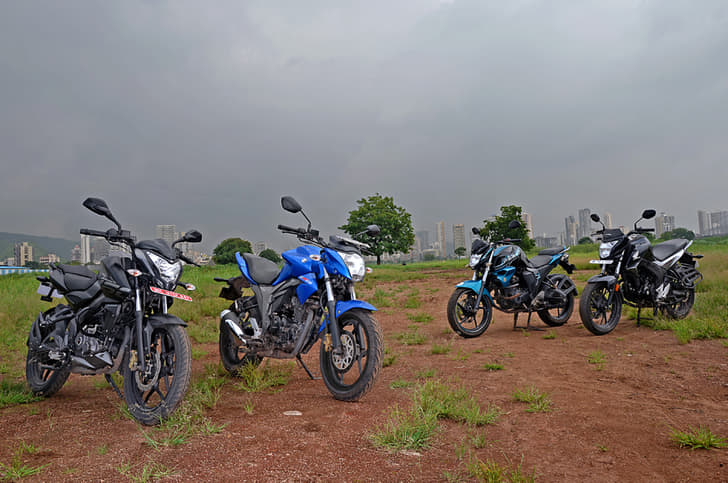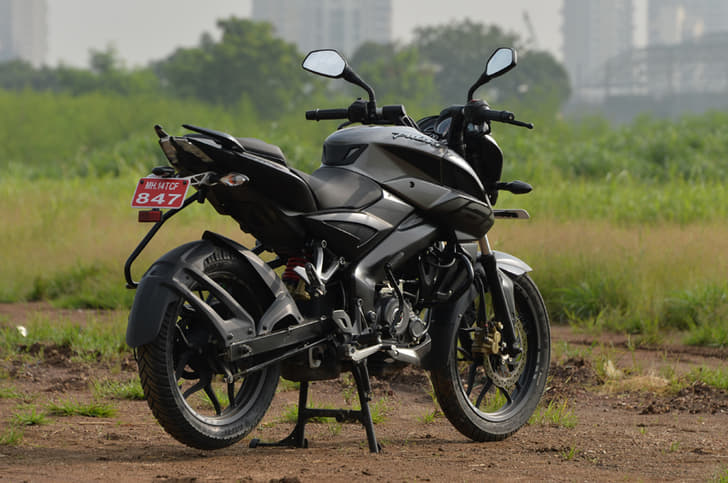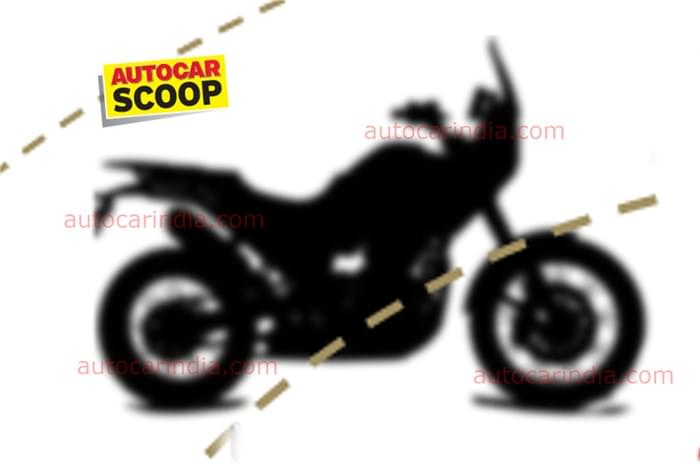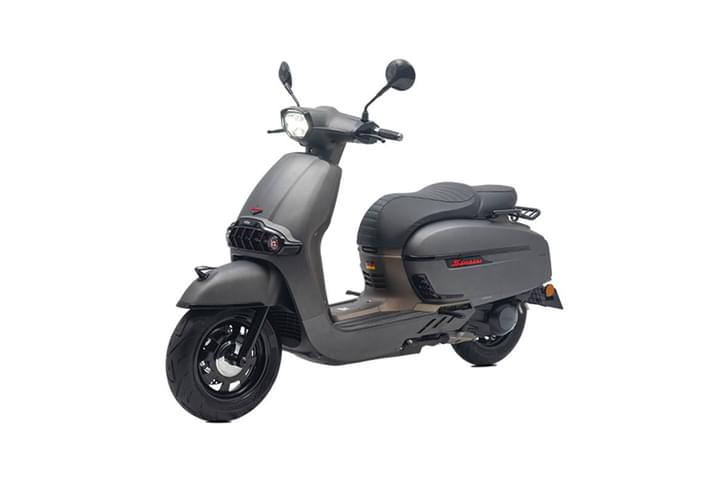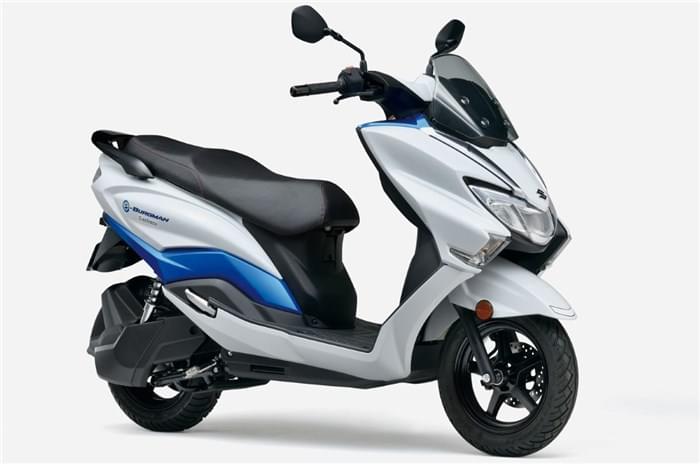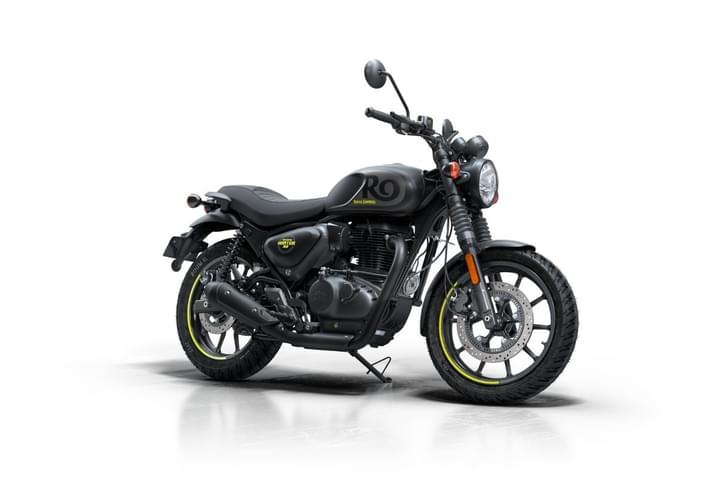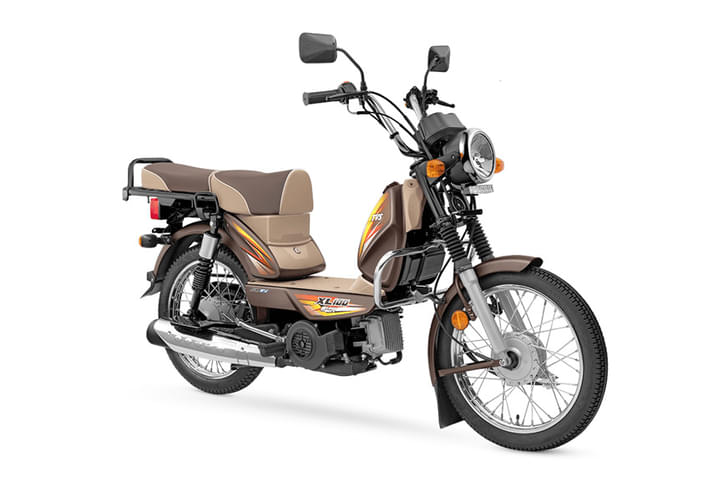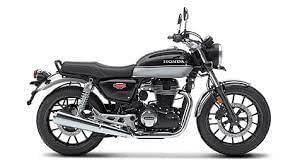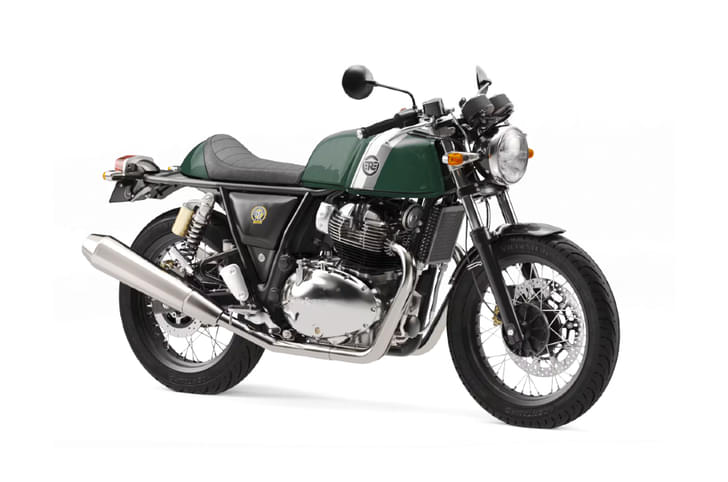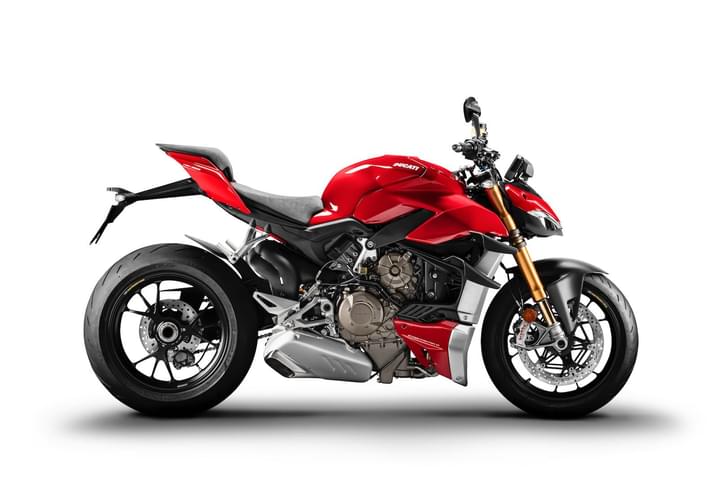The Gixxer has so far topped every comparison test, and not without reason. It’s stylish, fun and feature-rich and we’re a country of people who like that sort of motorcycle, a lot. That explains why we now have the TVS Apache RTR 160 4V, which has its eyes sit firmly on dethroning the Gixxer. Let’s jump right into this brawl, shall we?
STOP – LOOK – GO!
The Gixxer came first, and it’s beginning to show. It’s always been a funky-looking motorcycle and it still qualifies as one. The fuel tank bears a pronounced hunch, which helps you lock onto the bike with your thighs and the upswept tail-end gives away its sporty intentions in an instant. Its five-year old lines are pretty wrinkle-free to this day, but you can tell that it’s gotten conscious of its age. The SP treatment isn’t the most flattering one – the mix of a glossy two-tone paint job with irrelevant decals and a large dollop of chrome on the exhaust isn’t particularly fashionable. Still, it’s a cool motorcycle nobody’s going to mistake for a commuter.
The RTR 160 4V is nicer to look at. Its borrowed lines (from the RTR 200 4V) have been straightened out a bit, but it still looks racy, regardless of where you view it from. It’s visibly larger, too, and that’s down to it starting life as a 200, which is a good thing. Both motorcycles feature digital meters, by the way, but its the Gixxer that also features a gear-position indicator (which is genuinely helpful); only the fuel-injected variant of the RTR gets one. Given the choice, I’d pick the RTR – but you don’t necessarily have to agree with someone who thinks grey all-weather Adidas shoes are fashionable. Having said that, I do think the Gixxer deserves to age more gracefully – how about some old-school racing liveries next, Suzuki?
| Dimensions | ||
|---|---|---|
| Apache RTR 160 4V | Gixxer SP | |
| Wheelbase | 1357mm | 1330mm |
| Seat height | 800mm | 780mm |
| Ground clearance | 180mm | 160mm |
| Kerb weight | 145kg | 135kg |
| Fuel tank capacity | 12 litres | 12 litres |
| Tyres (f/r) | 90/90-17 / 130/70-17 | 100/80-17 / 140/60R-17 |
| Brakes (f/r) | 270mm / 200mm | 266mm / 220mm |
MOTOR MOUTH
The brief has always been clear in this segment; speed is essential but not at the expense of economy or real-world rideability. The Gixxer knows this only too well, which is why it has won every comparison test, including our last one where it outwitted the Bajaj Pulsar NS160, the Honda CB Hornet and the Yamaha FZ-S. Its 154.9cc motor has never been famed for segment leading performance, but it's a lovable thing nonetheless. The Gixxer’s two-valve motor produces 14.8hp at 8,000rpm and 14Nm of torque at 6,000rpm, both of which are numbers that have proven to be impressive beyond just the spec sheet.
This is a motor tuned delightfully for low-end torque – crucial in the city – and its tractability through all of its five gears will delight even those accustomed to riding slightly larger motorcycles. Its peppy and responsive motor makes urban riding pleasantly involving and, yes, it’s wheelie-happy too! But it's on the highway that the Gixxer begins to feel its size – not too much, but you can tell. Beyond 90kph, it demands commitment and perseverance; while it can eventually go past 110kph, you will know you’re being pushy thanks to the vibrations and the strained engine note. In the city, and in moderately-fast twisty bits, there’s still nothing as charming as the Gixxer though. Having commuted, toured and raced with the Gixxer, I can vouch for that.
The Apache hasn’t been in the reckoning in recent years, but the RTR 160 4V finally puts that to an end. And how! The RTR’s 159.7cc, four-valve motor is, to begin with, superior in terms of its output figures – 16.5hp at 8,000rpm and 14.8Nm of torque at 6,500rpm are the new segment benchmark. But that’s not the only reason behind its resurrection as a worthy contender in this segment. TVS, in recent years, has grasped the nuances of building refined engines that go beyond just outright speed, and it’s showing. The best example of its new learning has to be the RTR 160 4V, and it’s staggering how polite and well-mannered it is.
The RTR’s refinement takes the game to an altogether new elevation. The engine is a crisp, almost-numb motor at the bottom-end but that’s not to say it’s a slouch; it just doesn’t feel as perky-eared as the Gixxer. But it makes up for it with a convincingly stronger feeling top-end. The four-valve motor feels visibly more grown up and the light throttle action adds to the sweet, friendly responses. In the real world, it calms your nerves, which is perhaps the need of the hour in hostile traffic conditions such as ours. Its five-speed gearbox puts you further at ease by being slicker than the Gixxer’s. Overall, the motor has an air of confidence to it that is more in character with a bigger motorcycle – nice! In the city, the RTR feels fast but undemanding, although aggressive riding will introduce you to a vibe-band that emerges at 6,000rpm and dissipates past 7,500rpm. Past this, the RTR continues to build up and it feels more comfortable doing so all the way to its redline. The RTR is better suited to the highway as well, where its scaled-down feel makes it seem more at ease than the Gixxer (although not monumentally so) at every speed-point.
| Powertrain | ||
|---|---|---|
| Apache RTR 160 4V | Gixxer SP | |
| Engine | 159.7cc, 4-valve | 154.9cc, 2-valve |
| Max power | 16.5hp at 8000rpm | 14.8hp at 8000rpm |
| Max torque | 14.8Nm at 6500rpm | 14Nm at 6000rpm |
| Fuel efficiency | 48.7kpl | 54.1kpl |
TURN IT UP
This is where the old friendship rekindles. Both, Suzuki and TVS (just being alphabetically correct here – no bias!) know a great deal about making fun motorcycles. While they approach fun in different ways today, the results are for you and I to revel in. And let me say this right at the beginning – you can’t go wrong with either!
The Gixxer is the yuppy teenager with a spring in its step. It seats you more upright – I love the leverage its taller handlebar provides. Weighing 135kg, it’s a highly commendable 10kg lighter than the RTR. It also has the shorter wheelbase of the two (1,330mm versus the RTR’s 1,357mm) and that means its almost laugh-out-loud flickable – you’ll trade it for nothing if you’re largely city-bound. It corners intuitively, helped not just by its inherently agile chassis, but also by its grippy and substantial tyres – 100/80-17 and 140/60R-17 (front/rear).
The Gixxer does have the firmer suspension of the two, however. This works if you have found that your purpose in life is to ride up and down a perfectly paved twisty hill section. But most of us haven’t, and that means you will have to watch out for really bad roads and bumps. Its ride quality isn’t bad as such, and the Gixxer does well to feel like a well-engineered, rock-solid motorcycle, but the Apache just feels more contemporary and plush in comparison.
The Apache says been-there, done-that like nothing else, and that’s because it’s true. Having indulged teenagers with its irreverent older-gen model (still on sale), the RTR 4V knows better. Its riding position is more committed thanks to the lower handlebar but I’d trade that in for a more upright unit, frankly – there’s nothing like a tall ‘bar for imperfect roads such as ours. Still, the RTR feels less lively in the urban cut and thrust, but compensates with its refined, mature responses. The Apache has the advantage in serious cornering, however, and that's saying something because we love the way the Gixxer attacks corners! If you take your cornering seriously – with a clinical, racetrack-acquired approach – you will be far more appreciative of the RTR. Its bigger-bike genes are transparently evident and while it may make the RTR seem less frantic (which it is; you will feel so especially if you have ridden an RTR 200 4V previously), this is a motorcycle that can handle corners in a precise, predictable way that has so far been the domain of bigger machines. Its 90/90-17 and 130/70-17 tyres (TVS Remoras) contribute to this immensely as well. Continuing on the mature theme (wait, that sounds wrong...) is, perhaps, what is the highlight of the package – the suspension. Both, the telescopic fork and the preload-adjustable monoshock, are wonderfully pliant over rough roads and while it may be a tad too soft for serious track use, it’s a fair compromise in the real world. The RTR is also the better motorcycle for a pillion, in terms of seating and suspension comfort, and you are free to debate with my better half on this. A word of caution, though – don’t!
BRAKE DANCE
We had twin-disc variants of both motorcycles for this test and, I must say, these are the ones you should opt for – the rear disc versions (220mm on the Gixxer, 200mm on the RTR) are worth the extra dough. Of the two, it’s the RTR that’s better on the brakes. Being heavier (and the one with the longer wheelbase) it feels more planted under hard braking, and its tyres cope well too. In comparison, the Gixxer sports a slightly smaller front disc (266mm, as compared to the RTR’s 270mm disc), but its braking is, well, a bit dramatic. Its shorter wheelbase makes for more pronounced weight transfer, and most of my 80-0kph test runs ended in spectacular stoppies. Here’s the catch, though; an ABS version of the Gixxer (and the faired SF) is already production-ready and will be launched very soon. It will, of course, be Rs 6,000-7,000 more expensive, but it’s a worthwhile investment. Come to think of it, every motorcycle in this segment will be required to feature ABS come 2019, and Suzuki deserves hearty applause for being the first to offer it, rather than waiting for it to become a matter of compliance. We're disappointed that TVS hasn't done the same, especially since it was the first to offer an ABS-equipped motorcycle in our market, with the Apache RTR 180 ABS.
LAW OF AVERAGES
For all your love for corners, wheelies and looking cool, you still have a firm eye on your wallet. If that wasn’t the case, you’d be reading our comparison story between the RR 310 and RC390 otherwise, right? This is fair, and I’m happy to report that neither motorcycle disappoints here, returning a decent level of efficiency considering the power and excitement on offer. The Gixxer, helped by its less powerful motor and lighter weight, is the more efficient of the two. It returns 54.1kpl on the highway, in comparison to the RTR’s 48.7kpl. This is a substantial difference, but not a deal-breaker when viewed in isolation. If you can’t help resist the savings, however, it’s the Gixxer you’ve got to have.
PURCHASE SEQUENCE
Priced at Rs 81,926 (SP, twin-disc, carburetted), the Gixxer is fun, stylish and well-equipped, and has Suzuki’s commendable build quality to boost its appeal. It’s a motorcycle you will never have a dull moment on, and that’s worth a lot to many of us. The Apache RTR 160 4V is a sliver more expensive at Rs 84,490 (twin-disc, carb), but it also does everything a little bit better. It’s more contemporary, as well-built if not better, and is more practical as well. Most of all, it manages to be fun when you want it and calm when you don't. It's been a fantastic run for the Gixxer, and the Suzuki is still a lovely motorcycle, but TVS has done it again. This bike is a winner!
(All prices ex-showroom, Delhi)




